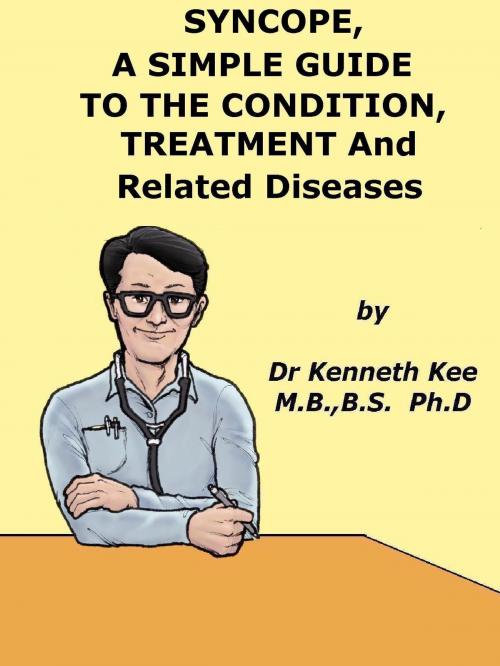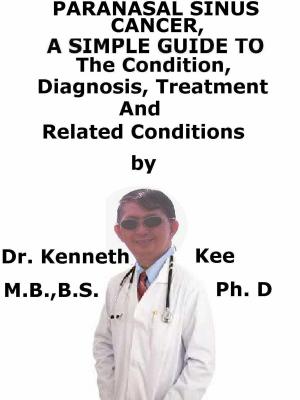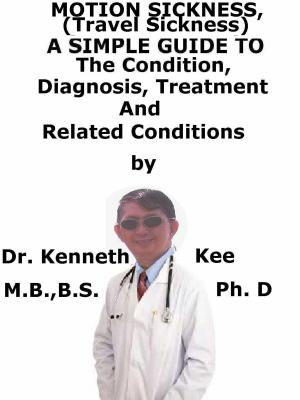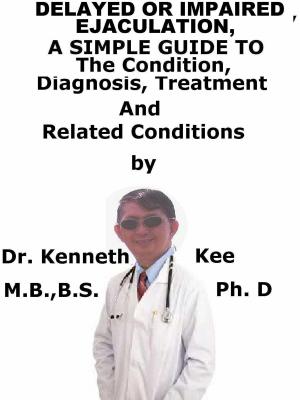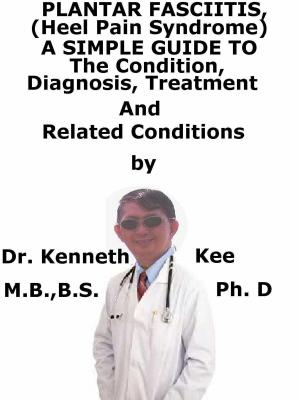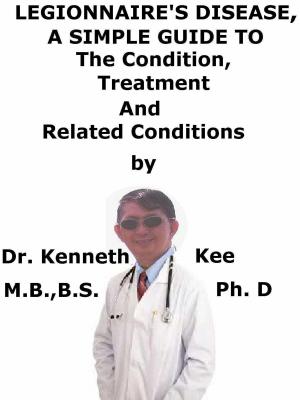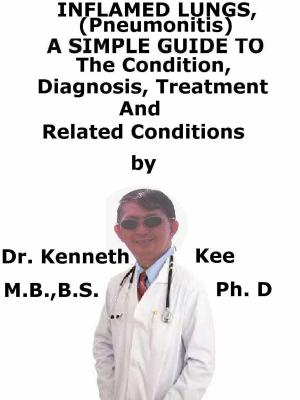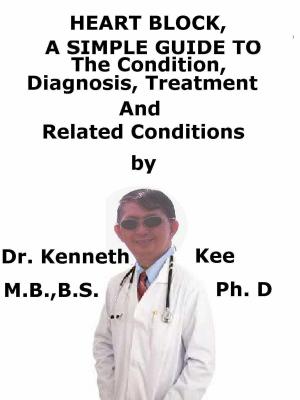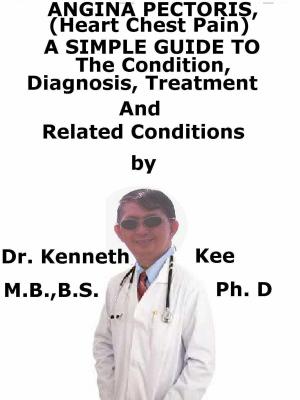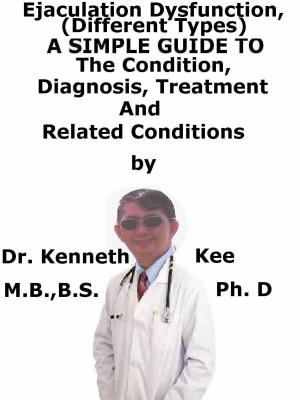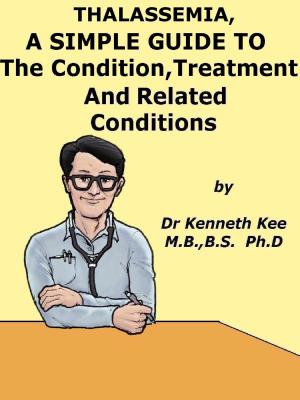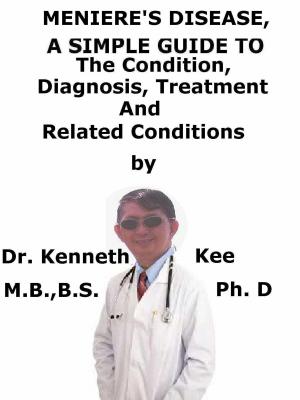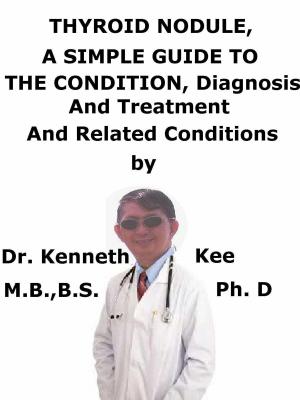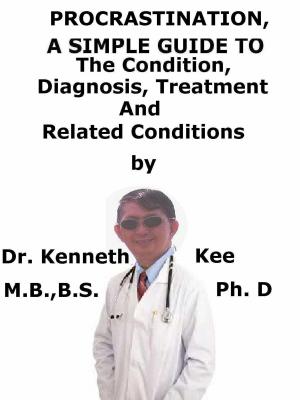Syncope, A Simple Guide to the Condition, Treatment and Related Diseases
Nonfiction, Health & Well Being, Medical, Specialties, Internal Medicine, Cardiology, Health, Ailments & Diseases, Nervous System & the Brain| Author: | Kenneth Kee | ISBN: | 9781310767692 |
| Publisher: | Kenneth Kee | Publication: | December 11, 2014 |
| Imprint: | Smashwords Edition | Language: | English |
| Author: | Kenneth Kee |
| ISBN: | 9781310767692 |
| Publisher: | Kenneth Kee |
| Publication: | December 11, 2014 |
| Imprint: | Smashwords Edition |
| Language: | English |
Syncope is the medical term for losing consciousness
It is not a disease but a symptom of fainting sickness
It usually occur after the age of 40 without pain
It is due to a drop of blood flow to the brain
Many forms of syncope are preceded by dizziness
There may be loss of vision and temporary weakness
There may be a feeling of heat, palpitations, sweating
There may be emotional distress, nausea and vomiting,
There are 3 main causes of the syncope condition
Cardiac, neural reflex and orthostatic hypotension
Physical examination and ECG are part of the initial evaluation
One best way is implantable loop recorders and hospitalization
Treatment may be just reassurance and education
Avoid prolonged standing in a hot environment
Squatting down on the heels can be very effective
Or sit down with the head between the knees.
-An original poem by Kenneth Kee
Interesting Tips about the Syncope
A Healthy Lifestyle
1. Take a well Balanced Diet
2. Treatment of Syncope:
a. Reassurance and education are usually all that is required.
b. Avoid potential triggers likely to induce syncope - e.g., prolonged standing in a hot environment or having a long hot bath.
Take action at the first warning sign of collapse:
a. If it is imminent, lie down flat with the legs up on a chair or against a wall or sit down with the head between the knees.
b. Squatting down on the heels can be very effective and is less noticeable in public.
These techniques help move venous blood that has pooled in the limbs aiding circulation to the brain.
When feeling better, get up carefully.
If symptoms return, resume the position.
Treatment may be required if syncope is very frequent, the patient is at risk of injury as attacks are unpredictable, or if syncope occurs during high-risk activities such as driving.
3. Keep bones and body strong
Bone marrow produces our blood
Eat foods rich in calcium like yogurt, cheese, milk, and dark green vegetables.
Eat foods rich in Vitamin D, like eggs, fatty fish, cereal, and fortified milk.
Eat food rich in Vitamins B and C such as green vegetables and fruits
Zinc and other minerals are important to the body
4. Get enough rest and Sleep
Avoid stress and tension
5. Exercise and stay active.
It is best to do weight-bearing exercise such as walking, jogging, stair climbing, dancing, or lifting weights for 2½ hours a week.
One way to do this is to be active 30 minutes a day at least 5 days a week.
Begin slowly especially if a person has not been active.
6. Do not drink more than 2 alcohol drinks a day for a man or 1 alcohol drink a day for a woman.
Alcohol use also increases the chance of falling and breaking a bone.
Alcohol can affect the neurons and brain cells.
7. Stop or do not begin smoking.
It also interferes with blood supply and healing.
Chapter 1
Syncope
Syncope is a temporary loss of consciousness resulting from inadequate cerebral blood supply.
Causes:
A. Vasomotor:
1. Vagal slowing of heart and reduction of blood pressure from fear, severe pain or psychogenic disturbance
2. Hemorrhage or circulatory fluid loss from burns
3. Postural hypotension - blood pressure drops from sleeping or sitting position to upright position
4. Vasoactive drugs such as anti-hypertensive (prazosin, methyl dopa) and heart medicines (nitrites, adrenergic blockers)
5. Carotid sinus compression
B. Cardiac:
1. Asystole or heart blockage
2. Sudden arrhythmias with high ventricular rate
3. Heart valve prosthesis
4. Aortic stenosis with exertion
5. Cardiogenic shock following myocardial infarction
6. Sudden cardiac compression
TABLE OF CONTENT
Introduction
Chapter 1 Syncope
Chapter 2 More Facts about Syncope
Chapter 3 Treatment of Syncope
Chapter 4 Shock
Chapter 5 Dizziness
Chapter 6 Motion Sickness
Chapter 7 Hypoglycemia
Chapter 8 Coma
Syncope is the medical term for losing consciousness
It is not a disease but a symptom of fainting sickness
It usually occur after the age of 40 without pain
It is due to a drop of blood flow to the brain
Many forms of syncope are preceded by dizziness
There may be loss of vision and temporary weakness
There may be a feeling of heat, palpitations, sweating
There may be emotional distress, nausea and vomiting,
There are 3 main causes of the syncope condition
Cardiac, neural reflex and orthostatic hypotension
Physical examination and ECG are part of the initial evaluation
One best way is implantable loop recorders and hospitalization
Treatment may be just reassurance and education
Avoid prolonged standing in a hot environment
Squatting down on the heels can be very effective
Or sit down with the head between the knees.
-An original poem by Kenneth Kee
Interesting Tips about the Syncope
A Healthy Lifestyle
1. Take a well Balanced Diet
2. Treatment of Syncope:
a. Reassurance and education are usually all that is required.
b. Avoid potential triggers likely to induce syncope - e.g., prolonged standing in a hot environment or having a long hot bath.
Take action at the first warning sign of collapse:
a. If it is imminent, lie down flat with the legs up on a chair or against a wall or sit down with the head between the knees.
b. Squatting down on the heels can be very effective and is less noticeable in public.
These techniques help move venous blood that has pooled in the limbs aiding circulation to the brain.
When feeling better, get up carefully.
If symptoms return, resume the position.
Treatment may be required if syncope is very frequent, the patient is at risk of injury as attacks are unpredictable, or if syncope occurs during high-risk activities such as driving.
3. Keep bones and body strong
Bone marrow produces our blood
Eat foods rich in calcium like yogurt, cheese, milk, and dark green vegetables.
Eat foods rich in Vitamin D, like eggs, fatty fish, cereal, and fortified milk.
Eat food rich in Vitamins B and C such as green vegetables and fruits
Zinc and other minerals are important to the body
4. Get enough rest and Sleep
Avoid stress and tension
5. Exercise and stay active.
It is best to do weight-bearing exercise such as walking, jogging, stair climbing, dancing, or lifting weights for 2½ hours a week.
One way to do this is to be active 30 minutes a day at least 5 days a week.
Begin slowly especially if a person has not been active.
6. Do not drink more than 2 alcohol drinks a day for a man or 1 alcohol drink a day for a woman.
Alcohol use also increases the chance of falling and breaking a bone.
Alcohol can affect the neurons and brain cells.
7. Stop or do not begin smoking.
It also interferes with blood supply and healing.
Chapter 1
Syncope
Syncope is a temporary loss of consciousness resulting from inadequate cerebral blood supply.
Causes:
A. Vasomotor:
1. Vagal slowing of heart and reduction of blood pressure from fear, severe pain or psychogenic disturbance
2. Hemorrhage or circulatory fluid loss from burns
3. Postural hypotension - blood pressure drops from sleeping or sitting position to upright position
4. Vasoactive drugs such as anti-hypertensive (prazosin, methyl dopa) and heart medicines (nitrites, adrenergic blockers)
5. Carotid sinus compression
B. Cardiac:
1. Asystole or heart blockage
2. Sudden arrhythmias with high ventricular rate
3. Heart valve prosthesis
4. Aortic stenosis with exertion
5. Cardiogenic shock following myocardial infarction
6. Sudden cardiac compression
TABLE OF CONTENT
Introduction
Chapter 1 Syncope
Chapter 2 More Facts about Syncope
Chapter 3 Treatment of Syncope
Chapter 4 Shock
Chapter 5 Dizziness
Chapter 6 Motion Sickness
Chapter 7 Hypoglycemia
Chapter 8 Coma
